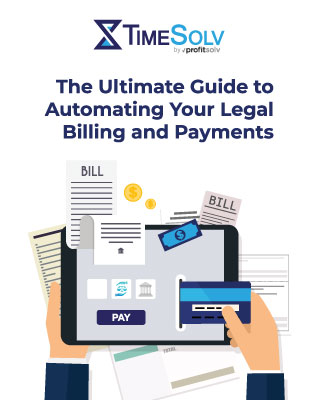Every lawyer knows their website is extremely important and needs to work well to increase lead generation. After all, 87% of law firms have one. But do you feel like it’s another overhead cost that’s gathering digital dust? Just one more subscription that’s costing your firm hundreds of dollars, yet isn’t helping you increase profits?
A legal website can be a powerful marketing and client conversion tool but only when utilized to its full potential. Here are five features of an impactful website to help you discern if your website makes the cut:
1. An effortless user experience
The most important part of a website is that it’s easy for the visitor to view. User experience (UX) design is the process of building a website that creates a meaningful experience for the user. If the person can’t find the information they’re looking for on your website, they’ll go to your competitor instead.
To figure out if your website offers a powerful UX, ask yourself:
- Is your website easy to navigate?
It should be simple for website visitors to find details such as practice areas, attorney profiles, and contact information.
- Does your website properly utilize white space?
Use ample white space to direct attention to the most important page elements, such as calls-to-action (CTAs), navigation menus, and content sections.
- Is your website well-branded and recognizable?
Use consistent colors, fonts, and design elements alongside a professional logo to create a cohesive and memorable identity.
- Does your website load quickly?
Every page should be optimized to load between 0 to 2 seconds, at the most 3 seconds, so visitors don’t leave your website.
- Is your website accessible?
Law firm websites should follow Title II of the American Disabilities Act to provide equitable access to your services.
The Ultimate Guide to Automating Your Legal Billing and Payments
To stay competitive in today’s legal landscape, law firms must embrace the power of technology, especially when it comes to billing and payments.
The best way to improve your law firm’s cash flow while also increasing client convenience is 'Automation'.
Download our free guide to improve your legal billing and payment process today!
2. SEO-optimized pages
Search engine optimization (SEO) is the process of improving your website’s visibility to rank higher for your services on search engine result pages (SERP). For example, if you type in “employment lawyer in Tampa, Florida,” Google will deliver a list of lawyers in that geographical region.
But to make that list, you need to employ the right SEO strategies.
SEO can be quite technical, so it’s best to seek the help of legal website designers to ensure you’re doing it properly.
When checking your law firm’s SEO, ask yourself:
- Does your website use descriptive URLs?
- Include your law firm’s name in the domain URL and organize URLs to reflect site hierarchy and content structure.
- Include relevant keywords that describe the page content and use hyphens to separate the words.
- Does every page have alt tags and meta descriptions?
- Include a 160-character or less meta description on each page that offers a summary of webpage content.
- Include descriptive alt tags on images to increase accessibility, improve topical relevance of images, help search engines understand the page, and improve user experience.
- Do you update your website regularly?
- Update content on your site to ensure accuracy and relevance and build credibility.
- Update content on your site to ensure accuracy and relevance and build credibility.
- Does your website focus on local SEO?
- Include keywords for your geographic location so that you’re only appearing in search results relevant to your firm.
3. Mobile-responsive features and forms
Out of all Google searches in the United States, 63% happen on mobile devices. It’s critical that your law firm’s website performs just as well on a cell phone as on a desktop computer. If not, you risk confusing potential clients, which makes them turn to a competitor.
Double-check that your law firm website follows these mobile best practices.
- Are your client intake forms responsive on mobile?
It should be just as easy for a potential client to fill out a form on their phone as it is on their computer.
- Does your website load quickly on mobile?
The 0-to-2-second rule applies to mobile devices as well.
- Is the navigation set up for mobile?
Touch interactions such as buttons and links should be large enough for leads to click with their fingers.
- Do you have click-to-call functionality?
Click-to-call makes it easy for people to call your law firm without navigating between apps.
4. User-friendly content
Content is king for websites because it helps search engines understand what kind of business you operate, allowing it to include your firm in the right search queries. Just as importantly, it helps users understand how you can help them.
When you offer meaningful, relevant content to potential clients, you increase trust with them and showcase your ability to provide the kind of services they’re looking for.
There are several different types of content your website should contain, including:
- Practice area pages that showcase the types of law you practice and how your services can benefit potential clients. This type of content should be persuasive and focus on your firm’s differentiators.
- Blogs that educate clients on issues related to your services. The best blogs are informative but not overly salesy, making them ideal for building new relationships.
- Attorney bios that highlight your bonafides, e.g., your educational background, credentials, awards, and more.
- Lead magnets that provide a deeper level of education for clients. Lead magnets are optional, but can be used in email drip campaigns to nurture prospects.
When looking through your law firm’s content, ask yourself the following questions:
- Does the content provide value?
Blogs and pages should provide insights needed by your target audience to make legal decisions.
- Does the content speak to your practice areas?
At the very least, you should have individual pages for each practice area that clearly define your services. Your blogs should also be clearly tied to your firm’s services.
- Does the content speak clearly?
Avoid using complex, legal jargon to ensure it’s easy for non-lawyers to understand.
- Is your content formatted for an online reader?
Make your content easy to scan by creating hierarchies with headers to guide people through the content. Incorporate images, infographics, and videos to home in on concepts.
5. Lead-generating CRM
Your law firm website can help you streamline client intake. However, the right software is key. A tool like TimeSolv’s Law Ruler CRM integration works seamlessly with websites to deliver all form information to your firm’s internal CRM (customer relationship management) software.
When considering your website’s client relationship management, ask yourself these questions:
- Does your website have a client intake form?
Use software that offers a custom form builder to tailor intake forms to your firm and specific practice areas.
- Does your website connect with a CRM?
CRM software offers marketing automation features to help you nurture leads, like automated texts and emails, creating a personalized and positive experience.
- Does your website include CTAs that drive leads to take action and submit an intake or lead-signup form?
Encourage leads to take the next step with tailored CTAs. Effective CTAs typically use eye-catching colors and highlight the benefits of taking the next step.
Increase conversion rates with TimeSolv Websites
Spend your time focusing on critical legal matters and let the legal design experts at TimeSolv Websites handle everything. Our all-in-one solution offers a professional and turnkey website with:
- A clean, modern design
- Convincing content
- SEO-optimization
- A mobile-friendly interface
- Robust CRM integration
See how we can turn your legal website into a lead generation powerhouse and book a demo with TimeSolv Websites today.
The Ultimate Guide to Automating Your Legal Billing and Payments
To stay competitive in today’s legal landscape, law firms must embrace the power of technology, especially when it comes to billing and payments.
The best way to improve your law firm’s cash flow while also increasing client convenience is 'Automation'.
Download our free guide to improve your legal billing and payment process today!







